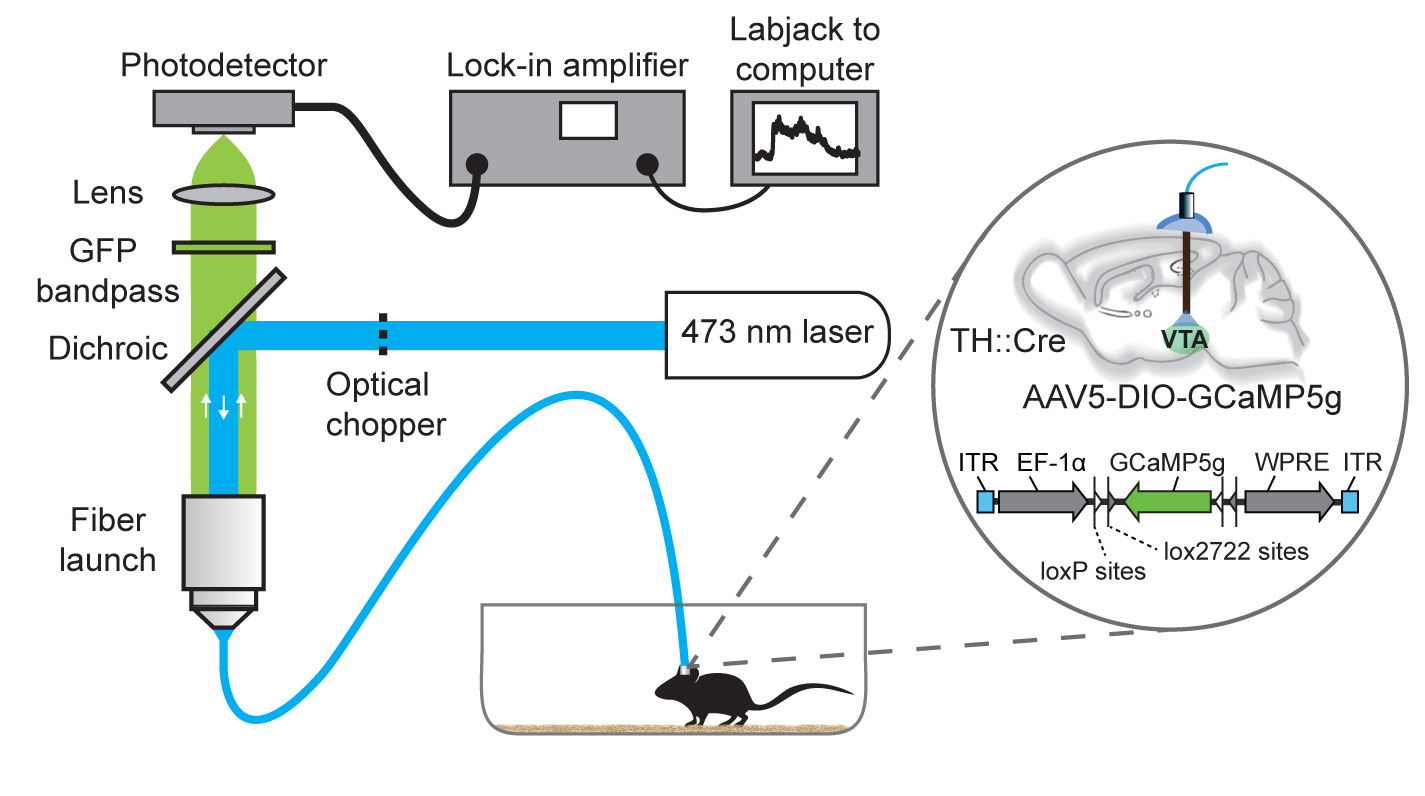Research overview
Psychiatric disorders were historically thought to arise from a brain-wide chemical imbalance in neurotransmitter levels, but it is now becoming clear that they involve much more complex and subtle alterations in neural dynamics across specific synapses and networks in the brain. Our lab aims to understand the neural circuits underlying motivated behaviors and how they are perturbed in psychiatric diseases such as anxiety, autism, and obsessive-compulsive disorder (OCD).
Because it is challenging to model complex human psychiatric disorders in their entirety in mice, we focus on discrete behavioral symptom domains that are tractable in rodents, such as social interaction, compulsive/repetitive behavior, and anxiety assays based on exploration and approach-avoidance conflict. Mechanisms underlying each of these fundamental behaviors are relevant to a broad range of human disorders (e.g. repetitive behavior is a symptom of both autism and OCD).
We are specifically interested in how top-down projections from the prefrontal cortex regulate subcortical areas involved in emotional behaviors. To address these questions we employ a combination of rodent behavioral assays, optogenetics, and neural recording. We focus on optical recording approaches such as fiber photometry, which allows us to record the activity of genetically defined cells and axonal projections in a behaving animal. This multifaceted approach allows us to 1) correlate endogenous patterns of cell type- and projection-specific neural circuit activity with specific behaviors, 2) manipulate these same circuits using optogenetic stimulation and inhibition to determine their causal role in behavior, and 3) use these basic scientific insights to guide targeted circuit manipulation as a way to ameliorate pathological behaviors in disease models.
Optical toolbox for neural circuit dissection

Recording endogenous neural activity in behaving animals
We use a technique called fiber photometry to optically record the activity of genetically-specified neurons and projections in rodents undergoing behavioral assays. A single 400 um optical fiber is implanted into the region of interest to record the population activity of neural circuit elements expressing a genetically encoded calcium indicator, allowing for chronic and stable access to deep brain regions in freely behaving animals.

Optogenetic tools for cell-type-specific control of neural activity
While fiber photometry allows us to correlate neural activity with specific behavioral states, we also use optogenetic tools in parallel to determine the causal role of genetically-specified neurons in behavior. Combined with cutting-edge viral tracing strategies, we can use optogenetics to systematically map the contribution of different elements along extended neural circuits in specific behaviors.